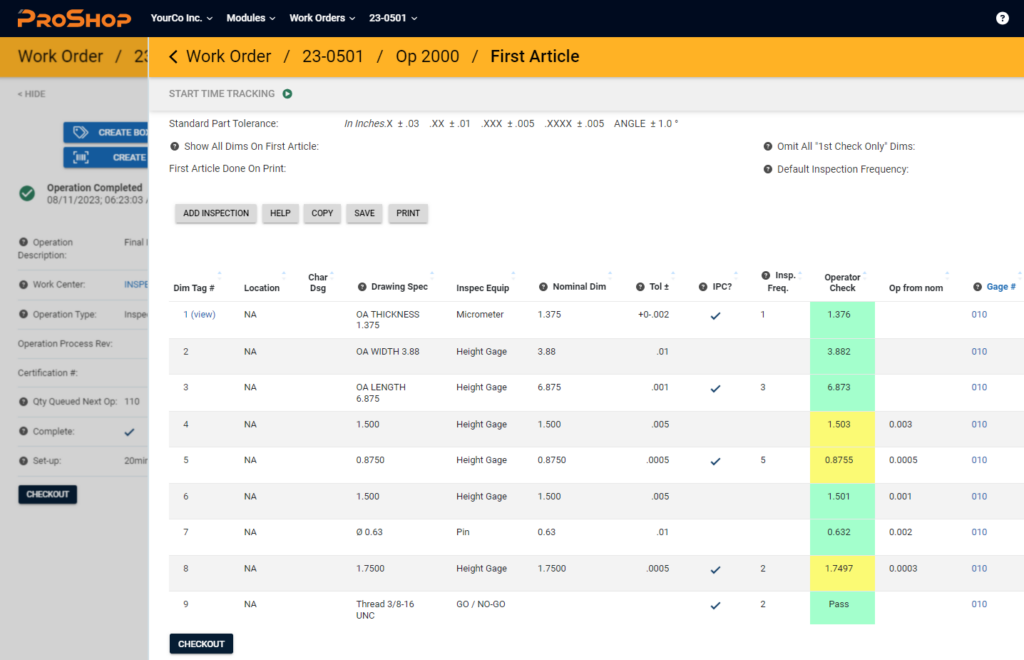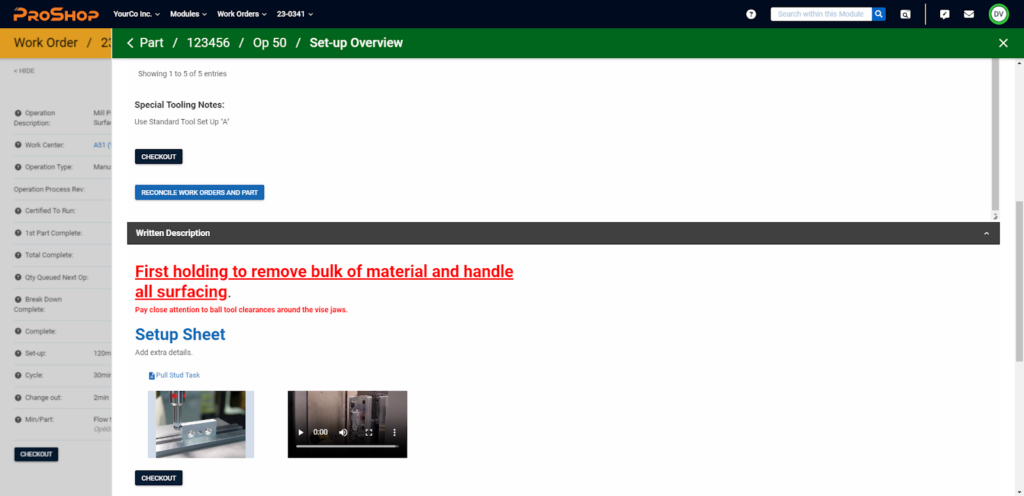Process
& Scheduling
Management
Maintenance
Management
& Inspection
& Material Planning
Financial Data
Management
Written by: Paul Van Metre and David Vuyk
Many shop owners pride themselves on their ability to “figure things out” when it comes to running a manufacturing business. In general, it can be a valuable skill to have, and when leveraged properly, can be used to drive your business forward. That being said, figuring things out on the spot isn’t a great approach to the production process. If that’s how you are currently managing job planning, you need to think long and hard about the inherent risks. Is your “secret sauce” and survival as a business dependent on your abilities or that of a few key employees? Depending on your answer, that would also prompt a few other questions:
In response to that, you must consider investing in a robust system whereby detailed work instructions can be documented and accessed by those who need it, the future of your business might depend on it. How do we systematize the “secret sauce” and make it scalable? Let’s dive in.
The problems that need to be solved:
The truth is, creating great work instructions is a fairly dynamic problem to solve. Beyond having an excellent job-planning process in place, you need to present work instructions in a way that is intuitive and easy to follow. This has always been a major limitation of paper traveler packets such as the one below. There might be a lot of information there, but it’s not easy to digest and who knows if it’s even up to date!

Beyond the presentation of detailed worked instructions, you also need a mechanism in place for process improvement documentation, data collection, and data management. Despite the challenge, there’s much we can do to simplify the complexity and optimize for a successful outcome.
Too often, shops run at the limit of their most skilled set-up technicians because the thought of teaching someone new seems too difficult and laborious. As a result, those skilled set-up technicians need to move quickly with minimal information in order to get jobs processed, often resulting in new problems down the line. Those problems might include:

Getting to this point doesn’t happen by accident. Rather, it’s often the result of incremental growth over time, whereby a system that may have worked when the company was small, just simply isn’t working well any more. The compounding waste that you’ve slowly become accustomed to is costing you big time, and that’s a problem which needs solving. Despite a natural resistance to change, process improvements which allow employees to feel less frustrated and more productive is a win-win for everyone involved.
Investing in a more detailed and robust system for the documentation of work instructions can feel foreign at first, but the benefits to the business as a whole are rather compelling. For one, project managers and shop leads get asked less questions because set-up technicians and operators typically have all the information they need to successfully complete the job. This means that shop floor staff are more focused, resulting in greater efficiency. This has a trickle-down effect for everyone involved in the production process from order entry, through to shipping and invoicing. Having greater clarity surrounding job status and what is required of different team members is a game changer. Simply moving through a defined production process versus just “winging it” allows jobs to be processed quicker.
Digital systems are especially advantageous because the various teams can be alerted to job status, and when they need to be involved, as opposed to simply waiting for a job traveler packet to land on their desk. For example, the inspection department having a dashboard of jobs that are ready for final inspection allows them to act sooner. Building on that with a predefined inspection plan allows that inspection process to be executed right away.

Apply that logic to all the different functions of the production process and you’ve likely increased productivity by an order of magnitude!
The future of work instructions is here:
Documenting process information, capturing tribal knowledge, and building a system whereby your team has the information needed to successfully execute doesn’t have to be a mystery. Embracing a digital solution such as ProShop ERP allows you to provide team members with the most up-to-date information so that they can get moving on the tasks that matter most. When everything is in one place, you waste less time looking for pertinent information which greatly increases process reliability.
ProShop’s part module was designed to optimize the production process. Part records serve as a repository for all manufacturing information pertaining to a given part number, organized in a way that is easy to access and understand. This includes part drawings, raw materials, detailed BOM’s for assemblies, QC data like FAI plans and in-process checks, time estimates, and much more!

Leveraging text, photo, and video instructions allows Job Planners to include detailed manufacturing plans and operation level instructions for different routings or build scenarios. ProShop’s capabilities also allows production staff to input process improvement suggestions during the process so that those improvements can be acted upon the next time the job is run. Beyond that, historical data is recorded and managed so that you can see historical set-up and cycle times, raw material costs, as well as job performance and profitability.
Digitizing your work instructions is a great way to document tribal knowledge and increase the rate of learning for less experienced staff members. You’ve invested heavily in building a team of skilled professionals. Now it’s time to unleash their productivity by implementing a system that supports their ability to execute and focus on the right tasks. When done properly, you’ll be surprised at how revenue and profitability will be impacted. If you’re looking to grow beyond the bottleneck of your current process, get in touch. We’d love to discuss how ProShop can help you do just that!


